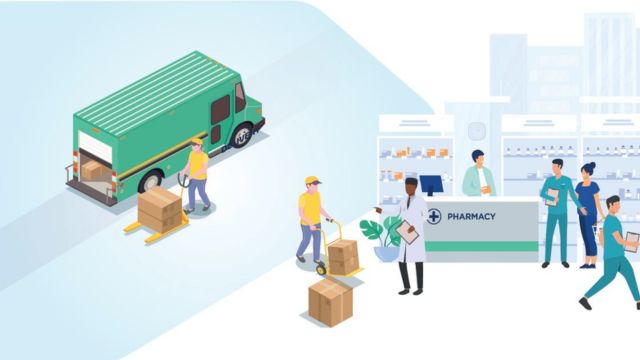The international health problems like the COVID-19 epidemic have revealed both weaknesses and amazing strength in medical supply networks all around. From personal protective equipment (PPE) to key drugs and devices, medical supply chains are absolutely vital in making sure that necessary healthcare supplies find their way to healthcare practitioners and patients timely. These supply chains have to quickly adjust to hitherto unheard-of needs, disrupted logistics, and changing legal environments during crises.
We investigate in this paper how medical supply chains change during health crises, the difficulties they encounter, and the creative ideas that have surfaced to improve resilience and responsiveness.
Understanding Medical Supply Chains
Medical supply chains are all the actions required in obtaining, manufacturing, storage, and distribution of medical goods. This covers manufacturers, suppliers of raw materials, logistics companies, hospitals, and government departments. These chains run on set plans and forecasts during typical periods. Health crises, however, generate surges in demand and disruptions that call for quick changes.
Key Challenges Faced During Health Crises
1. Sudden Demand Surge
Health emergencies cause an explosive increase in demand for critical supplies like masks, ventilators, test kits, and medicines. Traditional supply chain models, often built for steady demand, struggle to keep pace.
2. Supply Disruptions
Lockdowns, border closures, and factory shutdowns interrupt the flow of raw materials and finished goods. Countries that rely on international suppliers face delays and shortages.
3. Logistical Bottlenecks
Transport restrictions and reduced workforce availability create delays in shipping and delivery. Cold chain requirements for some medicines add further complexity.
4. Regulatory Hurdles
During crises, regulatory agencies may alter approval processes for faster distribution, but navigating these rapidly changing rules can be challenging for suppliers.
How Medical Supply Chains Adapt

1. Agile Demand Forecasting and Inventory Management
Advanced analytics and real-time data monitoring enable supply chains to forecast demand spikes more accurately. Organizations use predictive models incorporating epidemiological data to anticipate needs. Just-in-time inventory systems shift towards buffer stocks of critical items to prevent shortages.
2. Diversification of Suppliers
Reliance on a single region or supplier is a risk during disruptions. Many organizations have diversified their supplier base across multiple geographies to ensure continuity. Local sourcing and reshoring initiatives have gained traction to reduce dependence on global supply chains.
3. Increased Collaboration and Transparency
Health crises encourage unprecedented collaboration among manufacturers, governments, and healthcare providers. Information sharing platforms provide visibility across the supply chain, helping stakeholders identify bottlenecks and coordinate responses effectively.
4. Flexible Manufacturing and Supply Chain Networks
Manufacturers have adapted by retooling factories to produce high-demand items such as PPE or ventilators. Flexible production lines and partnerships allow rapid scaling up or switching of product lines. For example, automotive companies producing ventilators during COVID-19.
5. Leveraging Technology and Automation
Digital technologies like IoT, blockchain, and AI have been deployed to improve supply chain traceability, monitor inventory levels, and automate ordering processes. Robotics in warehouses speed up packing and distribution, reducing human contact risks.
6. Regulatory Adaptations
Regulators have implemented emergency use authorizations and expedited approval processes to facilitate faster market entry of essential supplies. Suppliers adapt by closely monitoring regulatory changes and maintaining compliance.
Case Study: COVID-19 Pandemic Response
During the COVID-19 crisis, medical supply chains faced global disruptions but adapted in several notable ways:
-
PPE Shortages: Rapid demand led to manufacturers worldwide switching production to masks and gowns. Governments coordinated bulk procurement and stockpiling to stabilize supplies.
-
Vaccine Distribution: The cold chain logistics for vaccines required innovative packaging, real-time temperature monitoring, and coordinated global distribution networks.
-
Telehealth and Diagnostics: Supply chains adapted to the surge in testing supplies and remote healthcare equipment, enabling broader access to care.
Building Resilient Medical Supply Chains for the Future
Health crises highlight the need for resilient, adaptable medical supply chains. Strategies for future preparedness include:
-
Investment in Data Infrastructure: Enhancing data sharing and predictive analytics to foresee and mitigate disruptions.
-
Strategic Stockpiles: Maintaining adequate reserves of essential supplies and clear protocols for their deployment.
-
Public-Private Partnerships: Strengthening collaboration across sectors to mobilize resources quickly.
-
Sustainable Sourcing: Balancing local production and global supply chains for flexibility.
-
Workforce Training: Preparing supply chain professionals to respond to emergency demands with agility.
Conclusion
Medical supply networks are the backbone of effective healthcare delivery, especially during health crises. Their ability to adapt fast to changing needs, logistical problems, and regulatory shifts is important to saving lives and addressing public health emergencies. Through diversity, collaboration, technology use, and flexible manufacturing, medical supply chains continue to grow towards higher resilience, ensuring that healthcare providers are able to meet future difficulties with confidence.
Looking for reliable medical, clinical engineering, and manufacturing supplies? At J & J Supplies, we provide high-quality products tailored to your needs. Explore our extensive range today and ensure your operations run smoothly with trusted, durable solutions. Visit us now at jandjsupplies.com!








